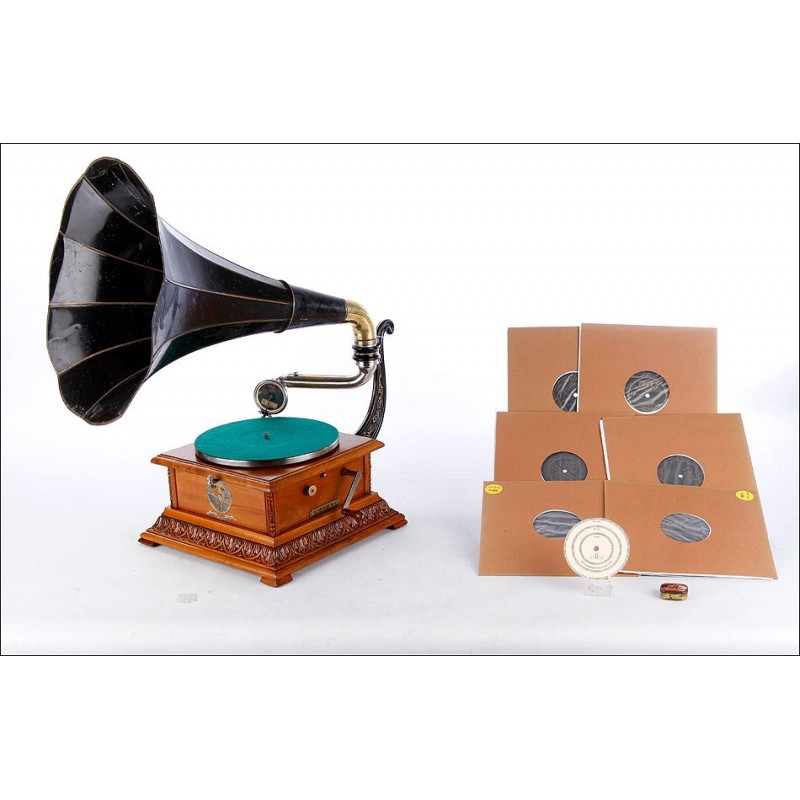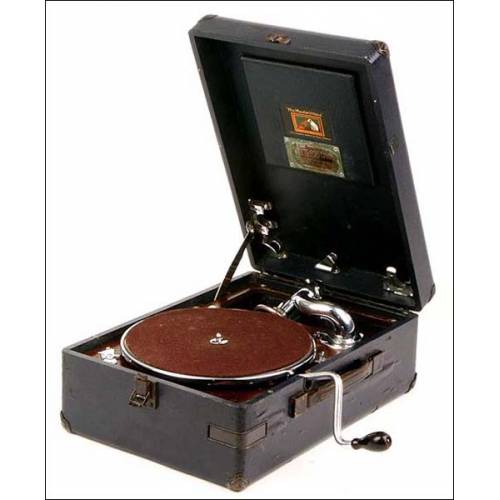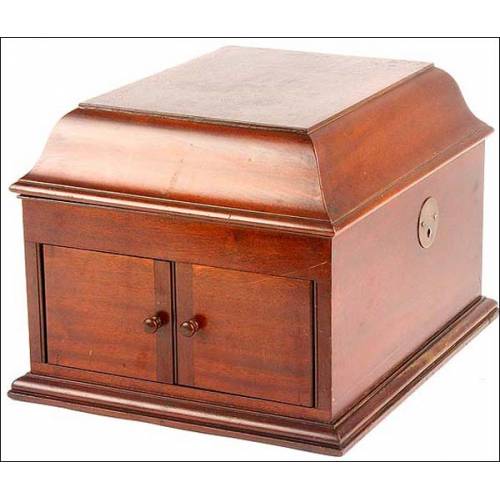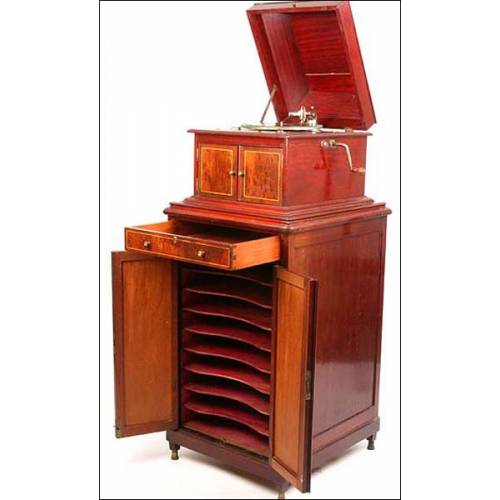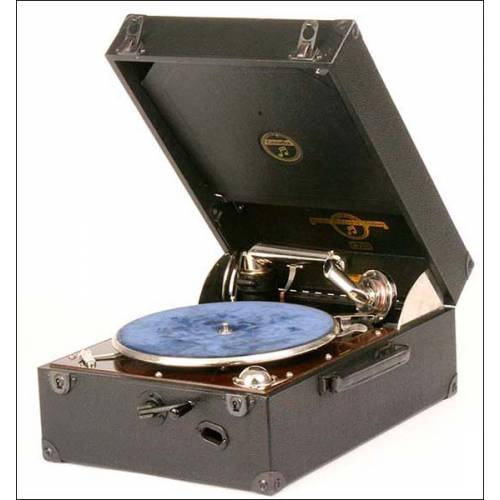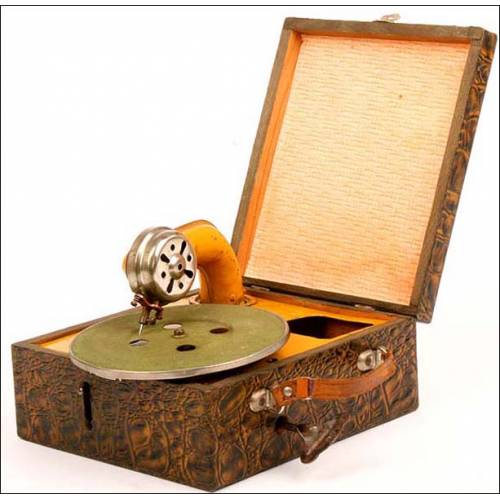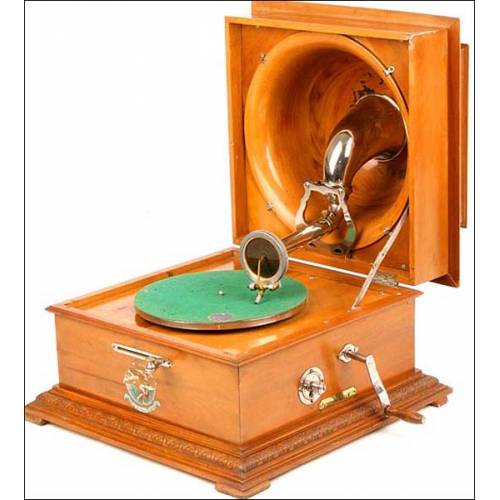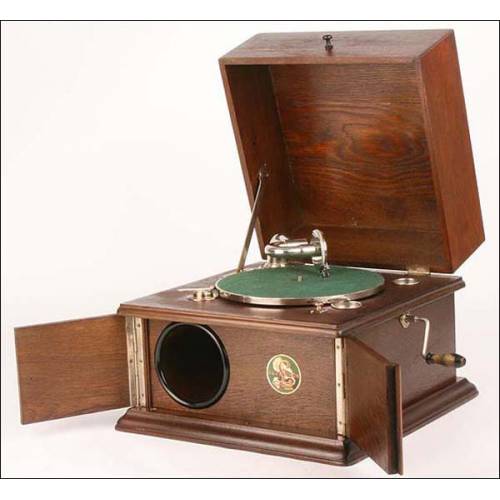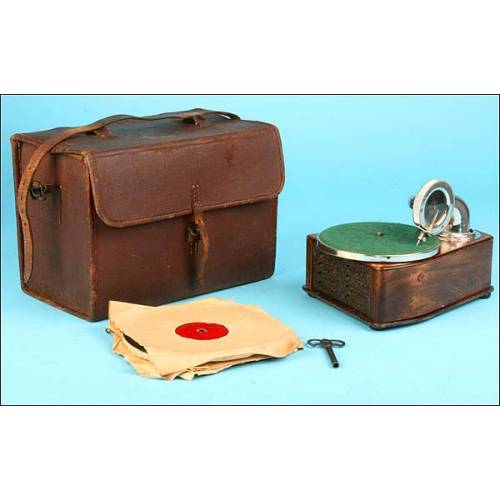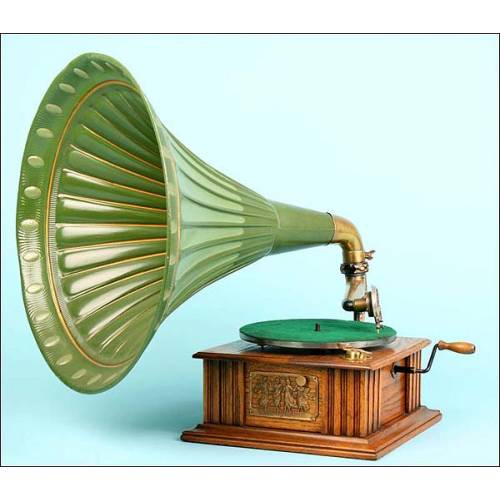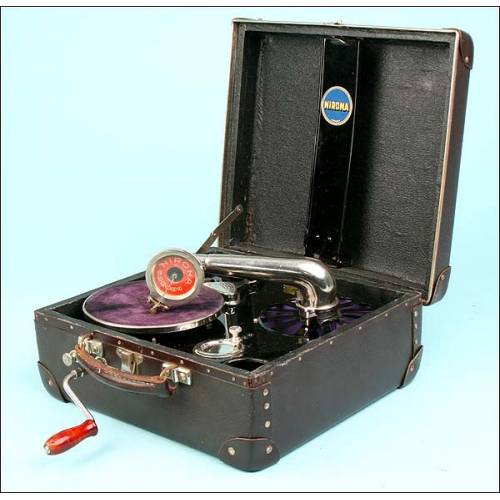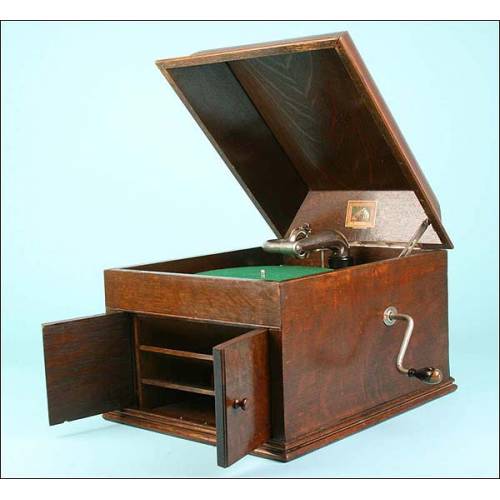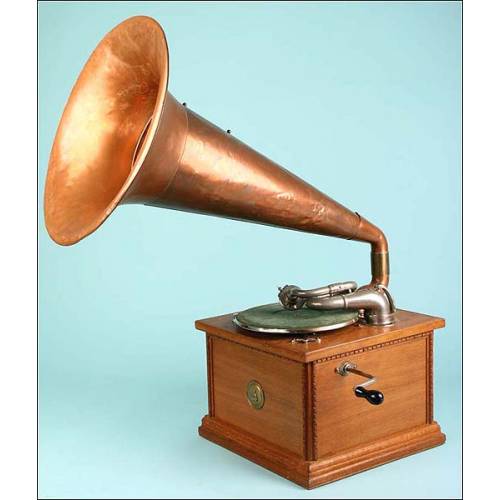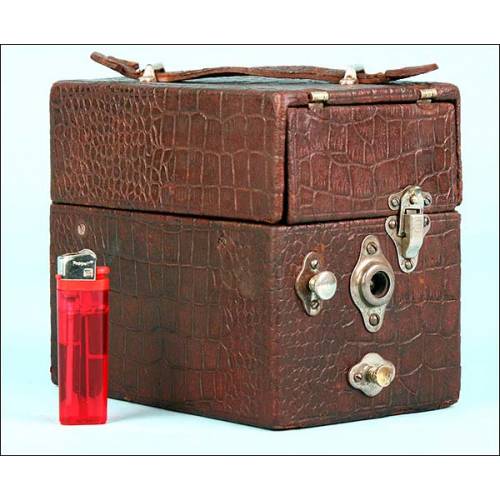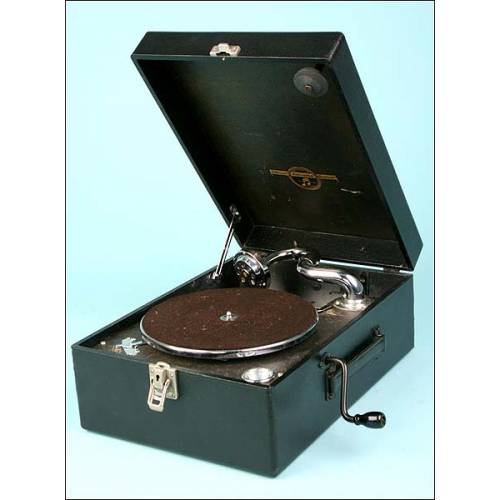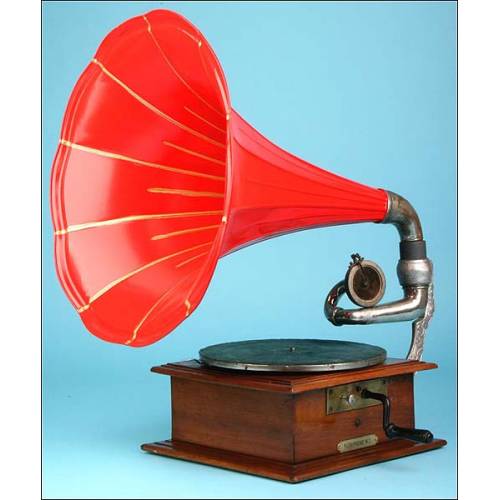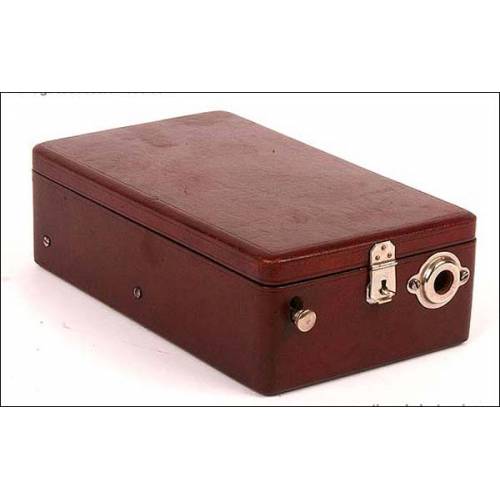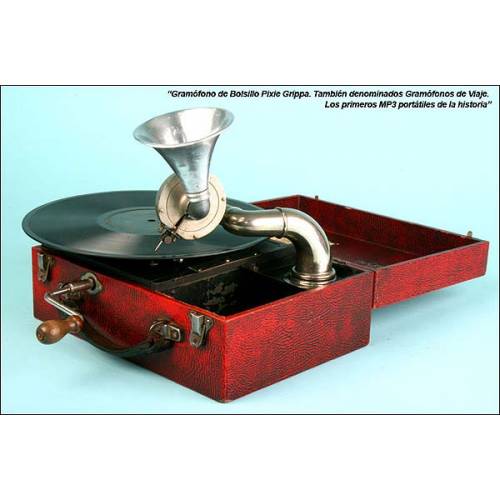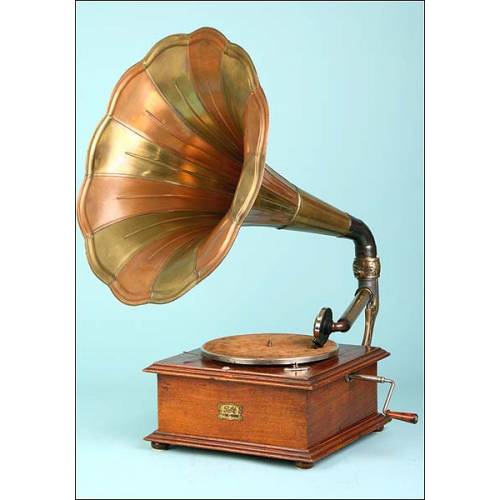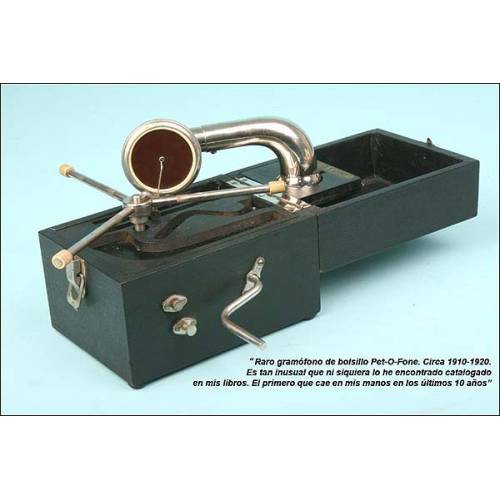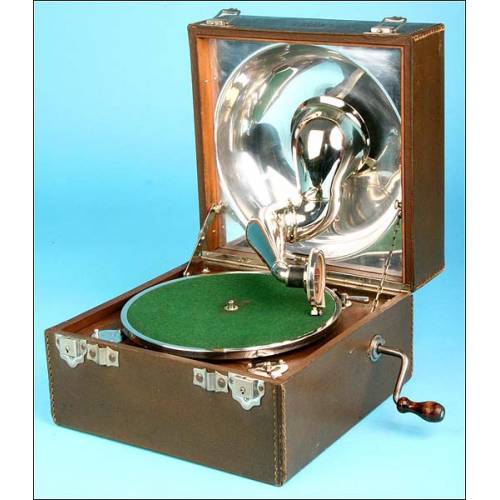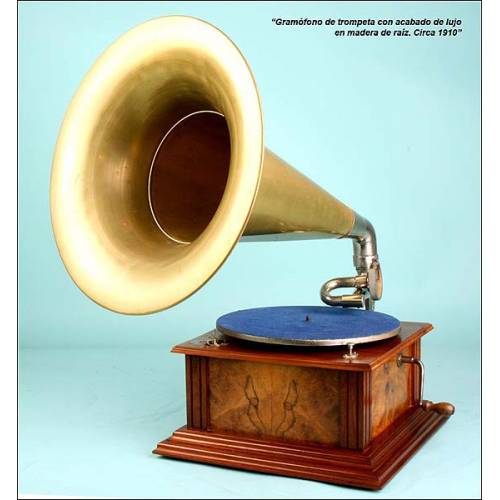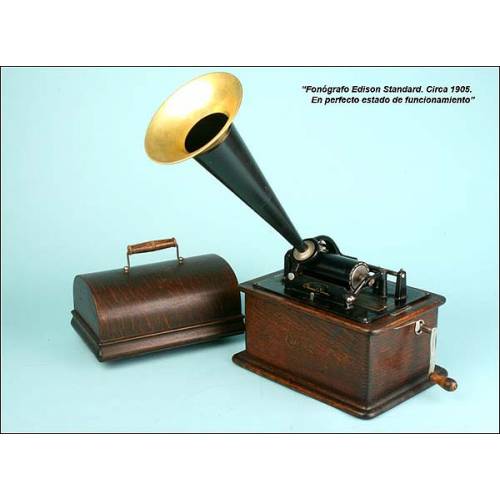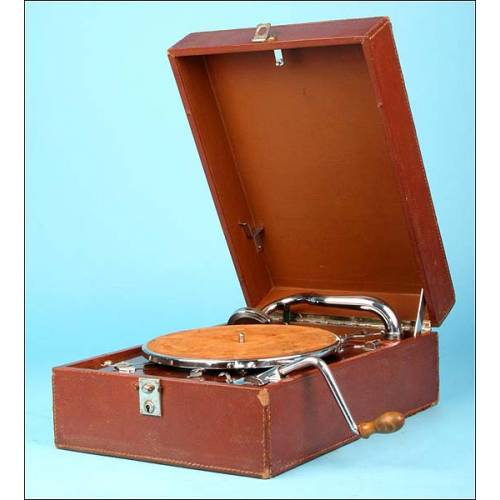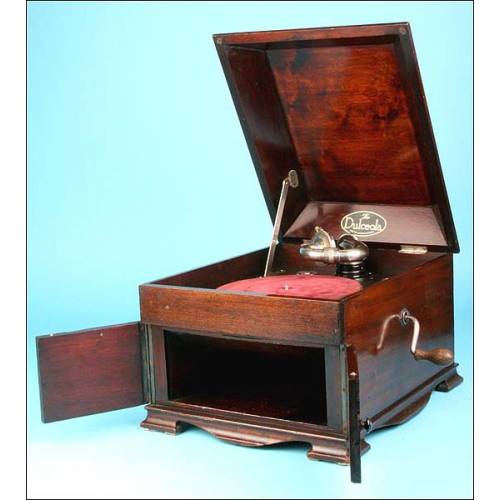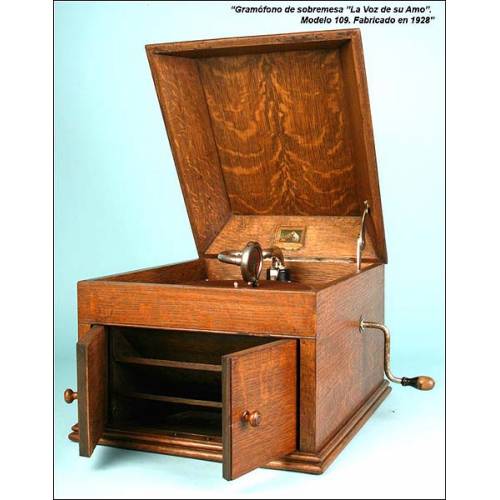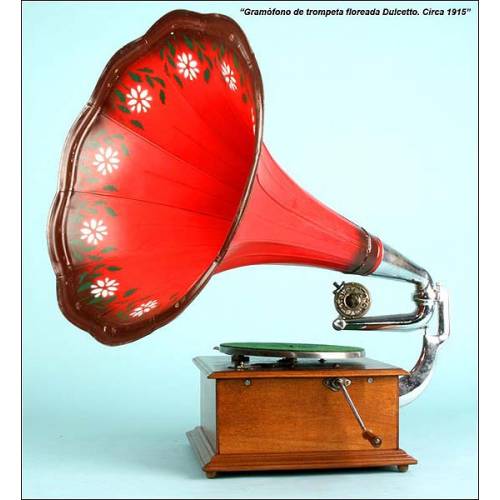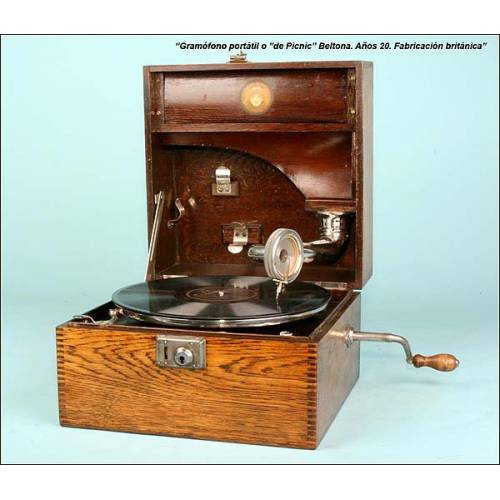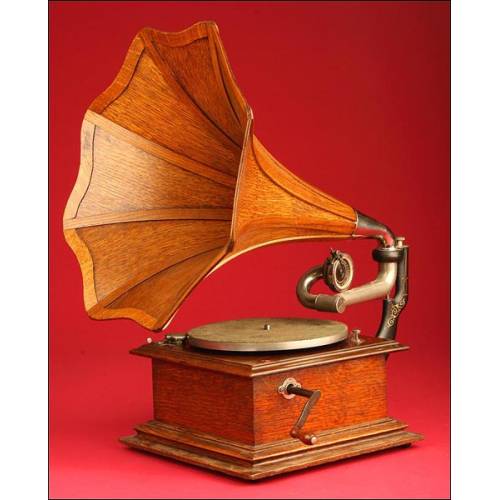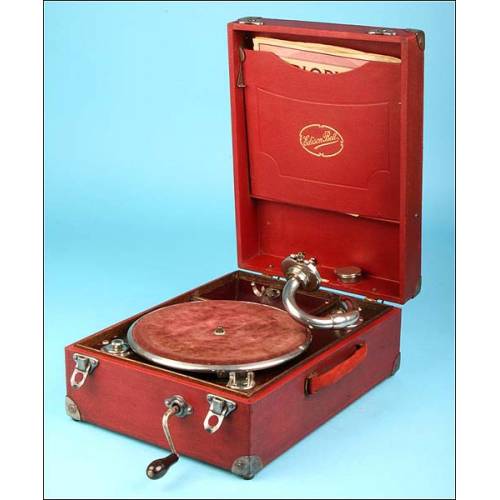B-574
Impressive Pathephone Gramophone No. 4 in perfect working order. France, Circa 1915
Wonderful antique Pathephone No. 4 gramophone in excellent condition. Original and working piece.
Sold!
Awesome Pathephone Nº 4 horn gramophone in striking condition, with an imposing look and in very good working order. This is an antique gramophone which was made in France circa 1915. Though it is around one hundred years old, the device sounds great: its motor has been fully cleaned and checked in order to guarantee an optimal performance. The rest of the component parts have also been carefully restored, though the horn has not been repainted so it can preserve its charming original finish. On the other hand, the felt that covers the turntable has also been renovated. In general, this gramophone is a really impressive piece that provides a high reproduction quality. The box is made of solid lemongrass wood, with carved and molded base and hand-carved corners. At the front side we find the lovely original sticker, almost complete. The reproducer is also an original Pathé piece with the classic rooster-shaped brand logo. Attached to the box we can see a brass plate with the model name, PATHEPHONE Nº 4, engraved in the metal. The beautiful iron piece that supports the arm with the reproducer is decorated with a golden filigree motive, carefully restored. Last but not least, the morning glory metal horn preserves the original black enameled finish with gold-painted ribs. This stunning Pathephone gramophone is a real museum piece that will shine in the dining room of the most elegant house. Measurements: Box: Side: 13 in / 34 cm. Height: 6.6 in / 17 cm. Elbow's Height: 15.7 in / 40 cm. Horn: Length: 25.1 in / 64 cm. Mouth's Width:15.9 in / 40.5 cm. Pathé Fréres - History The company was founded as Société Pathé Frères in Paris, France in 1896, by the four brothers Charles, Émile, Théophile and Jacques Pathé. During the first part of the 20th century, Pathé became the largest film equipment and production company in the world, as well as a major producer of phonograph records. Charles Pathé had helped open a gramophone shop in 1894 and established a phonograph factory at Chatou. Having decided to expand the record business to include film equipment, the company expanded dramatically. To finance its growth, the company took the name Compagnie Générale des Établissements Pathé Frères Phonographes & Cinématographes. In 1902, Pathé acquired the Lumière brothers' patents; by 1909, they had built more than 200 movie theaters in France and Belgium. By the following year they had facilities in Madrid, Moscow, Rome and New York City plus Australia and Japan. Prior to the outbreak of World War I, Pathé dominated Europe's market in motion picture cameras and projectors.

